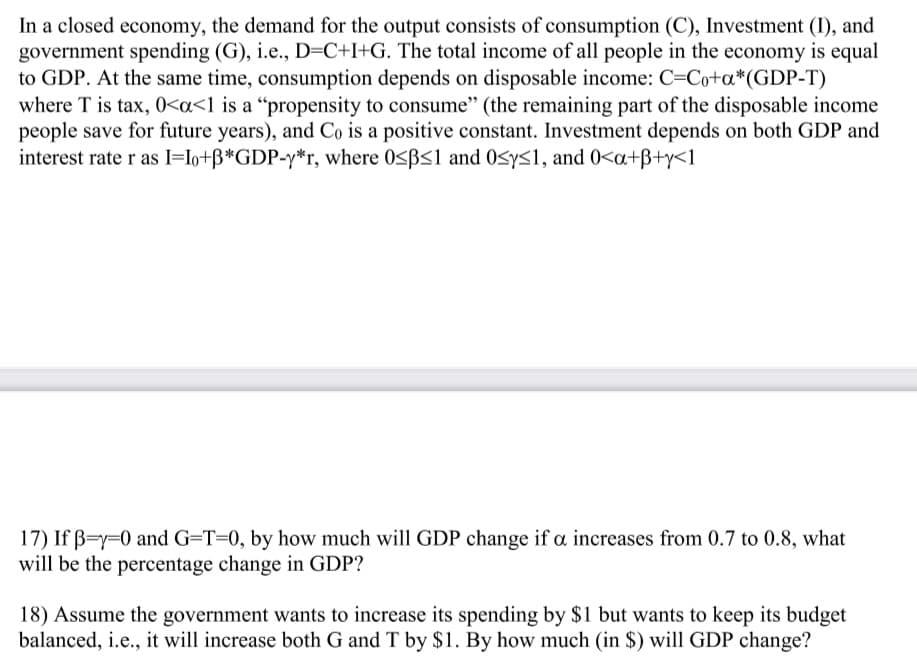In a closed economy, the demand for the output consists of consumption (C), Investment (I), and government spending (G), i.e., D=C+I+G. The total income of all people in the economy is equal to GDP. At the same time, consumption depends on disposable income: C=Co+a*(GDP-T) where T is tax, 0
In a closed economy, the demand for the output consists of consumption (C), Investment (I), and government spending (G), i.e., D=C+I+G. The total income of all people in the economy is equal to GDP. At the same time, consumption depends on disposable income: C=Co+a*(GDP-T) where T is tax, 0
Chapter8: The Keynesian Model
Section: Chapter Questions
Problem 17SQ
Related questions
Question

Transcribed Image Text:In a closed economy, the demand for the output consists of consumption (C), Investment (I), and
government spending (G), i.e., D=C+I+G. The total income of all people in the economy is equal
to GDP. At the same time, consumption depends on disposable income: C=Co+a*(GDP-T)
where T is tax, 0<a<1 is a “propensity to consume" (the remaining part of the disposable income
people save for future years), and Co is a positive constant. Investment depends on both GDP and
interest rate r as I=Io+ß*GDP-y*r, where 0<BS1 and 0<ys1, and 0<a+ß+y<1
17) If B=y=0 and G=T=0, by how much will GDP change if a increases from 0.7 to 0.8, what
will be the percentage change in GDP?
18) Assume the government wants to increase its spending by $1 but wants to keep its budget
balanced, i.e., it will increase both G and T by $1. By how much (in $) will GDP change?
Expert Solution
This question has been solved!
Explore an expertly crafted, step-by-step solution for a thorough understanding of key concepts.
This is a popular solution!
Trending now
This is a popular solution!
Step by step
Solved in 3 steps with 1 images

Knowledge Booster
Learn more about
Need a deep-dive on the concept behind this application? Look no further. Learn more about this topic, economics and related others by exploring similar questions and additional content below.Recommended textbooks for you







Economics (MindTap Course List)
Economics
ISBN:
9781337617383
Author:
Roger A. Arnold
Publisher:
Cengage Learning


Exploring Economics
Economics
ISBN:
9781544336329
Author:
Robert L. Sexton
Publisher:
SAGE Publications, Inc